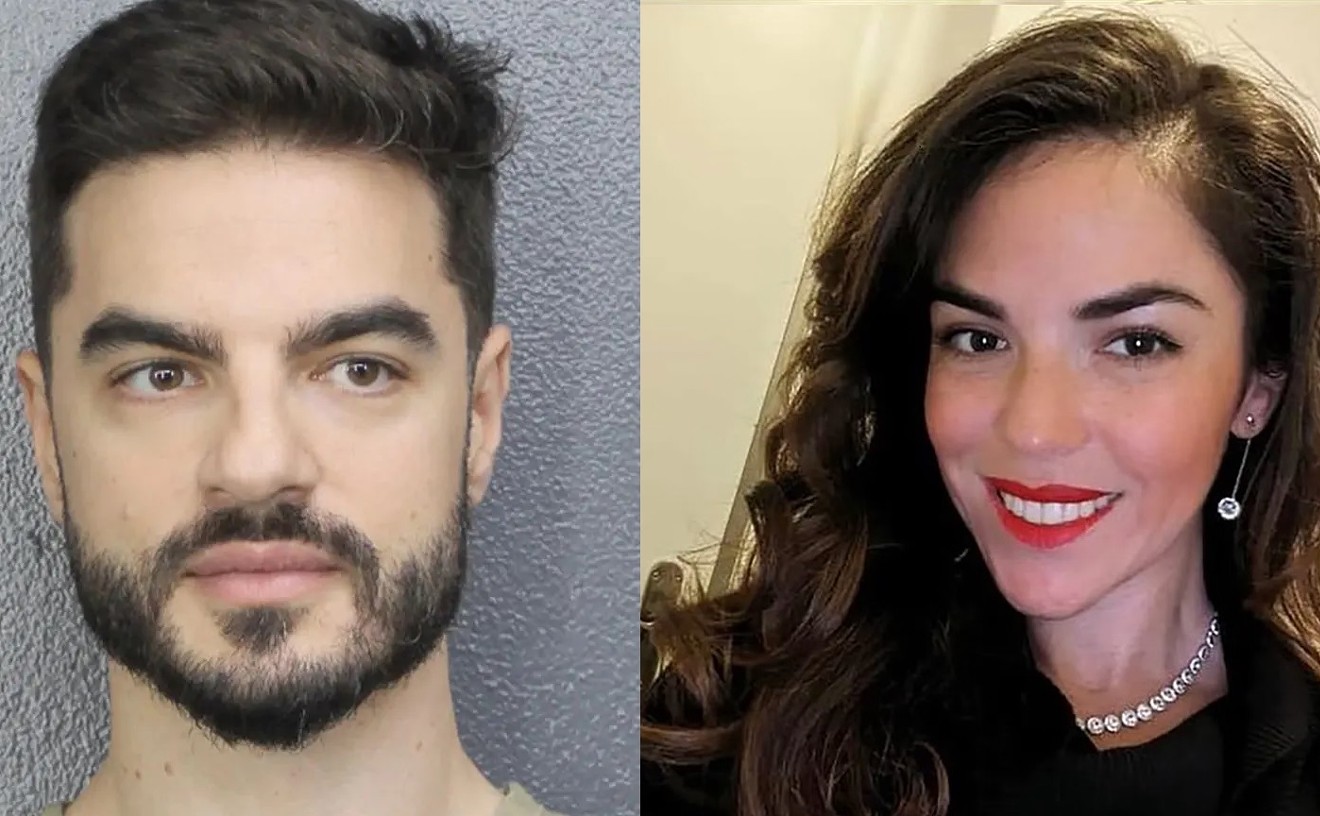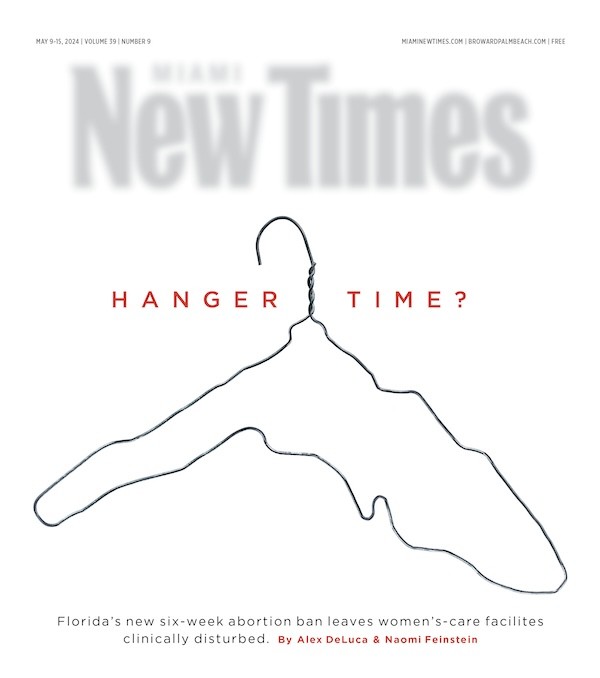The bodies of scores of Miami's black pioneers fill a five-acre piece of prairie in South Miami-Dade near South Dixie Highway and Coconut Palm Drive. Many of the forenames are forgotten, but the family names can be found in the county's halls of power and history books: Cherry, Richardson, Perry, Gaither.
In 2004, Miami-Dade commissioners termed the burial grounds historically significant, noting they had been established in 1905, a scant few years after Miami was incorporated. Black residents of places such as Homestead, Princeton, Perrine, and Goulds were buried here in the days when they were segregated, lynched, banned from voting, and left to work on nearby farms for pennies a day.
But there was
Now some historians — and locals whose relatives were laid to rest here in Silvergreen Cemetery — fear the burial site may soon be desecrated further. The county is set to begin a $17 million project that will build a road next to the cemetery, first with two lanes and eventually four.
"It's very, very unfortunate, and it's very painful
The owner of the cemetery, David Vega, says concerns are misguided. He doesn't agree that the site is historic. But, he says, "I wouldn't allow the burials to be disturbed."
Silvergreen Cemetery, called Carver or Princeton Colored Cemetery in some records, has a history that traces back to Gaston Drake, the founder of Drake Lumber Company, who named the community of Princeton for his alma mater. His company was a major provider of wood until it moved to Palm Beach County in 1923.
"It's very unfortunate... because nobody knows anything about those people buried there."
tweet this
Drake offered the land that would become Silvergreen as a cemetery for his black workers, according to local historians. In those days, the South was deeply segregated, and South Florida was no exception. That's just the way things were, says 95-year-old Lydia Walker, daughter of the cemetery's gravedigger.
"White people would bury in white cemeteries, and black people would bury in black cemeteries," Walker says. "We had no thoughts about it."
She remembers whites being waited on before blacks at local grocery stores. And she recalls the lynching of a teenage boy who crossed through a white family's yard and saw a woman getting out of a bath.
When a black resident died, the family would take up collections for the burial and cloth-covered casket, Walker says. The Masons, who ran the cemetery beginning in the late '20s or early '30s, collected a $25 fee for the burial plots, and the gravedigger was paid $5.
Before Walker's father, Johnnie "Catman" Everett, began digging the graves, it might take two or three days for a man with a shovel to break through the coral rock. But Everett demonstrated that dynamite could get the job done more quickly and then served as the cemetery's official gravedigger from 1919 to 1955, arriving early in the mornings to start his work.
The dead were buried during Sunday funerals that were a big part of the community, Walker recalls. But few families could afford headstones. "They would just put up a wooden stick with a cross," she says. "And that's how they were marked."
The last known burial was in 1955, the year the Masons sold the cemetery. Under new owner Phillip Coleman, Silvergreen soon fell into disrepair. Headstones crumbled or were stolen, local amateur historian Larry Wiggins says. Trees and bushes filled the lot. Relatives of the dead could no longer find their loved ones.
"It kind of just got overgrown and forgotten," Wiggins says. "It was not a place that you would really recognize as there being any graves at all unless you were walking through it."
In 1989, after Givens filed a complaint, the state investigated and made note of the vegetation on the site. An investigator found that Coleman had initially maintained it but then stopped when no sales were made, according to a February 2004 article in the Miami Herald.
Coleman "admitted it hasn't been maintained
Walker led a local group in compiling names of people who might have been buried at Silvergreen. The handwritten list grew to include more than 60 people. It may be the best documentation that exists: Everett couldn't read or write, so any documentation would have fallen to his young daughter.
"I'd just write out the name of the person that he was to dig a grave for," Walker remembers, adding that the names weren't saved. "That was the sad part about it — I
By spring 2004, efforts to save the cemetery seemed to be gaining momentum. Miami-Dade commissioners in April passed a resolution urging the state to support the preservation, restoration, and recognition of historically black cemeteries such as Silvergreen. The resolution said that "many of Miami-Dade's early black pioneers are buried in Silvergreen Cemetery."
Within a year of that vote, the land was sold to real-estate agent Vega, who grew up in the Redland area. Before the sale went through, he met with Walker and other locals to reassure them he would clean up the cemetery.
"I kept my promise," Vega says today. "It's always clean. It's always completely clean. It has a sprinkler system on it to keep the grass clean, and it's always
He said he's the one who places the American flags on the headstones that remain.
The road that will run past the cemetery, SW 137th Avenue, has been in the works for more than a decade. It's part of a sales-tax-funded effort to relieve congestion, dubbed the People's Transportation Plan and approved by county voters in 2002.
Work on the 3.2-mile strip of concrete that will extend SW 137th Avenue from South Dixie Highway to SW 200th Street was supposed to begin years ago. Now, according to a county document, it's slated to start sometime before 2019.
Mary Waters, whose five-acre property will be bordered by the new road, vehemently opposes it. Her concern is less the cemetery than development she worries the road will bring to the Redland, one of the county's last agricultural areas. Much of the land is used for growing avocados, lychees, mangoes, tomatoes, and palm trees. In years past, such a road would not have been allowed here.
"Every time they win and we lose, there's more asphalt and concrete," Waters says. "And once there's that, it doesn't go
But a 2005 county study showed that extending SW 137th Avenue would alleviate congestion on other roads. It also noted the presence of Silvergreen. "The Miami-Dade Office of Historic Preservation has expressed some concerns regarding the potential impact that the proposed roadway projects may have," the study said. The office requested to be included in resolving issues that came of it.
Chief of the historic preservation office, Kathleen Slesnick Kauffman, acknowledges that Silvergreen merits designation as historic but doesn't have it. She's noncommittal about whether her office believes the cemetery will be disturbed by the roadwork, likely to include bulldozers, gravel, and noise.
Because many of the grave markers are now gone, it would "probably require some significant ground-penetrating radar to fully discover the boundaries of where the burials are," Kauffman writes in an email.
Local historians say it's common in old cemeteries to turn up bodies outside the presumed borders.
"Back in those days, there weren't defined boundaries, so to speak," Wiggins says. "And I would hope there would be some [way to] see whether it was disturbed, to see whether there was a grave dug out. I think it would be important to ensure the road wasn't built over what was a portion of the cemetery."
Miami-Dade Commissioner Daniella Levine Cava, who represents South Miami-Dade, says she plans to research the matter. "It's not just about transportation, really. It's
But Vega, the cemetery's owner, says he knows the locations of all the bodies because radar has already been used. He isn't able to produce documentation of that work, which he says he and the former owner, Coleman, had done in 2005.
Despite county records to the contrary, Vega also says he doesn't believe the cemetery is historic or that it was once segregated. "I wasn't around back then; I'm not that old," he says. "I could tell you that people have come around saying that, 'Oh, my uncle is buried here' — it must have been a long time ago — and they weren't black."
Within the next year or so, Vega says, he plans to put markers on all the graves. Then, for the first time in more than 60 years, the cemetery will reopen to the public for additional burials, he contends.
There is, however, no indication of this work on the site today. Givens, the 76-year-old who has long complained of the property's poor condition, had hoped the cemetery and the land around it would be turned into a memorial park. He wants a law that says "that in the future, when you sell people a space in a cemetery, that is theirs forever and a day.
"They're building, building, building, and all of a sudden we're destroying our history," Givens says. "There's history in that cemetery. White, black, green, or gray, this just isn't right."











